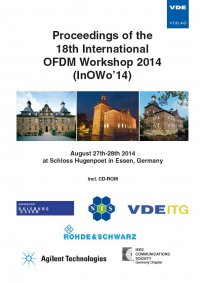Energy Efficiency Analysis of Dense Picocell Deployments
Conference: OFDM 2014 - 18th International OFDM Workshop 2014 (InOWo'14)
08/27/0000 - 08/28/2014 at Essen, Deutschland
Proceedings: OFDM 2014
Pages: 6Language: englishTyp: PDF
Personal VDE Members are entitled to a 10% discount on this title
Authors:
Obaid, Nasr; Czylwik, Andreas (Chair of Communication Systems, University Duisburg-Essen, Duisburg, Germany)
Abstract:
The integration of picocells in traditional macrocellular networks has been considered as a low power, low cost solution and as a promising strategy to improve the capacity and coverage in Long Term Evolution (LTE) networks. However, the dense pico base station (BS) deployments will increase the power consumption of the network and raise important questions about the energy efficiency in such heterogeneous networks. Furthermore, the large difference in downlink transmit power between macro and pico BSs may result in performance degradation, especially when a picocell receives severe interference from the macro BSs. In this paper, we analyse the energy efficiency and the area energy efficiency measured in [bit/J] and [bit/J/km2], respectively. The power consumption of macro and pico BSs has been taken into consideration to investigate the energy efficiency through different numbers of active pico BSs and different values of the macrocell size. The numerical results demonstrate the need of an optimal picocell deployment since deploying too many pico BSs may reduce the overall efficiency of the macrocellular networks. Furthermore, to maximize the number of active pico BSs that can attain the required capacity and to improve the overall efficiency, power control of macro BSs is needed. This work aims to provide essential understanding for successful deployment of power efficient heterogeneous networks.


